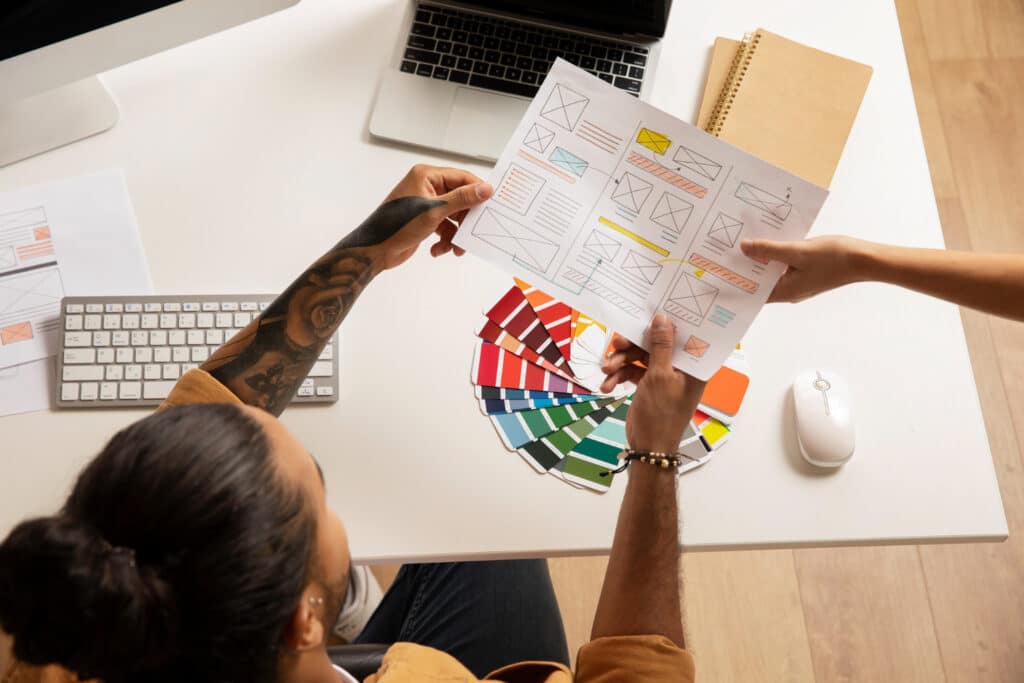Public schools pilot universal design learning methods

Universal design in public schools creates inclusive learning environments that cater to diverse student needs, enhancing engagement, academic performance, and fostering collaboration among all learners.
Public schools pilot universal design learning methods to make education more inclusive. This approach aims to engage all students, catering to their diverse needs and learning styles. Curious about what this means for the future of education?
Understanding universal design for learning
Understanding universal design for learning is essential for creating an inclusive classroom. This approach ensures that all students, regardless of their abilities or learning styles, receive the support they need. By integrating diverse teaching methods, educators can promote engagement and success for everyone.
Key Principles of Universal Design for Learning
The core principles of universal design for learning focus on providing multiple means of engagement, representation, and action. These principles guide teachers in developing lessons that cater to the varied needs of their students. When lessons are planned with these principles in mind, it encourages participation and success.
- Multiple means of engagement: Students should have various ways to participate in learning activities.
- Multiple means of representation: Information should be presented in different formats, allowing students to choose how they learn best.
- Multiple means of action and expression: Students should be able to demonstrate their understanding in various ways.
Implementing universal design principles begins with understanding the unique needs of each student. Educators should assess their students’ strengths and challenges early on. This insight allows them to tailor their teaching methods to maximize learning outcomes. For example, visual aids can enhance understanding for visual learners. Collaborative group work can benefit students who thrive in interactive settings.
Benefits of Universal Design for Learning
One major benefit of adopting universal design methods is that it fosters a more equitable learning environment. By focusing on what each student needs, education becomes more tailored and effective. Additionally, students become more independent, gaining confidence in their abilities to navigate different tasks and challenges.
Furthermore, universal design prepares students for future challenges by developing their skills in problem-solving and critical thinking. These abilities are vital in a world that is constantly evolving. As students feel more included and valued in their learning experiences, their motivation and academic performance often improve.
The benefits of universal design in public schools

The benefits of universal design in public schools are significant and far-reaching. By implementing this approach, schools can cater to a wide range of learning styles and needs. This ensures that every student has the opportunity to thrive academically and socially.
Improved Student Engagement
One of the key benefits is improved student engagement. When lessons are designed to include different learning modalities, students feel more connected to the material. Engaged students participate more actively, leading to better academic outcomes.
- Enhanced participation in classroom discussions.
- Increased motivation to complete assignments.
- Greater enthusiasm for learning topics of interest.
This active involvement creates a positive feedback loop where students become more eager to learn. Schools adopting universal design practices see noticeable increases in participation rates among diverse learner populations.
Boosted Academic Performance
Another significant benefit is boosted academic performance. With tailored instruction, students can master concepts at their own pace. Universal design recognizes that not all students learn the same way. By providing various paths to learning, students can achieve better results.
Additionally, assessments can be designed to reflect students’ strengths. For instance, a visual learner might express understanding through a project rather than a written test. This flexibility allows students to shine in ways that standard testing might overlook.
Creating an Inclusive Environment
A classroom that embraces universal design fosters a more inclusive environment. Students with different abilities feel valued and supported. This approach helps break down barriers that might hinder learning.
Collaboration among students also increases. When students work alongside peers with diverse skills, they develop empathy and understanding. These social skills are vital to personal growth and future success.
By promoting inclusivity, universal design not only benefits the students but also cultivates a positive school culture, enhancing the overall learning experience.
Implementing universal design strategies
Implementing universal design strategies in public schools involves careful planning and consideration of each student’s individual needs. These strategies aim to create a learning environment that is accessible to everyone, promoting equity in education.
Step-by-Step Approach
To effectively implement these strategies, educators can follow a step-by-step approach. First, it is crucial to assess the needs of all students. Understanding various learning styles and challenges helps in designing appropriate lessons. Next, teachers can use a mix of teaching methods. This includes visuals, hands-on activities, and technology to cater to diverse learners.
- Conduct assessments for learning styles early in the school year.
- Integrate technology tools that support different learning needs.
- Create flexible group activities to enhance peer collaboration.
Another important aspect is to provide options for how students can show what they know. Allowing students to choose between written reports, presentations, or projects can lead to better engagement and learning outcomes.
Professional Development for Educators
Training teachers on universal design is key to successful implementation. Schools can organize workshops to showcase best practices and innovative approaches. These sessions can help teachers understand how to modify instruction effectively.
Additionally, collaborating with special education professionals can provide valuable insights. These experts can assist in developing individualized strategies that benefit all students. Encouraging teachers to share experiences allows for a culture of continuous improvement in the classroom.
Monitoring and Adjusting Strategies
After implementing universal design strategies, it is essential to monitor their effectiveness. Gathering feedback from students helps in understanding which methods work best. Regular evaluations can inform necessary adjustments to enhance learning experiences.
Incorporating student input fosters a sense of ownership in their education. When students feel heard, they are more likely to engage in their learning process. Celebrating successes along the way motivates both teachers and students to continue refining their approaches.
Challenges in adopting universal design

Adopting universal design in education comes with its share of challenges. While the benefits are clear, schools often face obstacles that can hinder effective implementation. Recognizing these challenges is the first step toward overcoming them.
Resource Limitations
One significant challenge is the lack of resources. Many schools operate on tight budgets, which can limit their ability to purchase adaptive technologies or materials needed for universal design. Without the right resources, it can be difficult to create an inclusive environment for all students.
- Insufficient funding for training programs.
- Lack of access to specialized materials and technologies.
- Limited staff to support diverse learning needs.
When schools struggle with resource limitations, teachers may feel overwhelmed and underprepared. This can negatively impact their ability to implement universal design strategies effectively.
Resistance to Change
An additional challenge lies in resistance to change among faculty. Transitioning to a universal design approach requires a shift in mindset for many educators. Some may feel hesitant or unsure about altering their established teaching methods.
This resistance can be addressed through professional development. Providing training and ongoing support helps teachers feel more confident in implementing new strategies. Collaborating with experienced educators can also ease the transition.
Lack of Awareness
Another obstacle is the lack of awareness regarding universal design principles among staff and parents. Many educators might not fully understand how to implement these strategies in their classroom. Additionally, parents may not be informed about the importance of universal design for their children’s learning.
Raising awareness through workshops, seminars, and communications can help bridge this knowledge gap. Engaging the school community fosters a better understanding of the benefits of universal design.
Balancing Diverse Needs
Lastly, balancing the diverse needs of students can be a complex task. In any classroom, students present various challenges and strengths. Teachers are tasked with creating lessons that accommodate all these differences.
This balancing act requires careful planning and flexibility. Ongoing assessment and feedback from students can assist educators in adjusting their approaches to meet everyone’s needs more effectively.
Measuring the success of universal design initiatives
Measuring the success of universal design initiatives is crucial for understanding their impact in public schools. Effective evaluation helps schools make informed decisions about future strategies. This process includes various methods of assessment that provide insights into student learning and engagement.
Data Collection Techniques
To gauge effectiveness, schools can utilize a range of data collection techniques. Surveys and questionnaires are commonly used tools. Gathering feedback from students and teachers can highlight strengths and areas for improvement. Additionally, observation in classrooms allows for a real-time understanding of how universal design practices are being implemented.
- Surveys to assess student engagement and satisfaction.
- Teacher reflections on instructional practices.
- Classroom observations to monitor interactions.
These methods offer valuable qualitative and quantitative data, providing a complete picture of the initiative’s effectiveness.
Academic Performance Metrics
Academic performance metrics also play a significant role in measuring success. Schools can analyze assessment data, such as test scores and grades, to see if students are improving under universal design strategies. Comparing these metrics to previous years can indicate progress or areas needing further attention.
It’s essential to consider how diverse learners are performing. Look for trends in students with different abilities and backgrounds, as this can reveal how well the initiatives support all learners. Educational equity is a key goal of universal design.
Feedback and Continuous Improvement
Feedback from all stakeholders is essential for continuous improvement. Regularly engaging with students, parents, and staff fosters a collaborative environment. Schools can hold meetings to discuss progress and solicit ideas for refinement.
This ongoing dialogue ensures that the universal design initiatives remain responsive to the needs of the students. It also promotes a sense of community as everyone contributes to enhancing the learning environment.
Success Stories and Evidence
Furthermore, highlighting success stories is a powerful way to measure the impact of universal design initiatives. Schools can share testimonials from students and teachers who have benefited from these strategies. Showcasing these positive experiences can help rally support within the school and the community.
Documenting specific examples of improved engagement or academic achievement provides tangible evidence of success. These stories inspire others to adopt similar practices and demonstrate the real-world impact of universal design in education.
In conclusion, adopting universal design in public schools is essential for creating a more inclusive and effective educational environment. Through careful implementation, schools can improve student engagement, boost academic performance, and foster a sense of community. By addressing the challenges and measuring success, educators can ensure that all students benefit from diverse learning opportunities. Together, we can create classrooms that support every learner and celebrate their unique strengths.
FAQ – Frequently Asked Questions about Universal Design in Public Schools
What is universal design in education?
Universal design in education refers to creating a flexible learning environment that accommodates diverse students’ needs and abilities.
How does universal design improve student engagement?
It offers multiple ways to engage students, making learning more accessible and relevant to each individual’s interests and strengths.
What challenges do schools face when implementing universal design?
Schools often deal with resource limitations, resistance to change among teachers, and a lack of awareness about universal design principles.
How can schools measure the success of universal design initiatives?
Schools can measure success by collecting feedback from students and teachers, analyzing academic performance, and documenting success stories.





